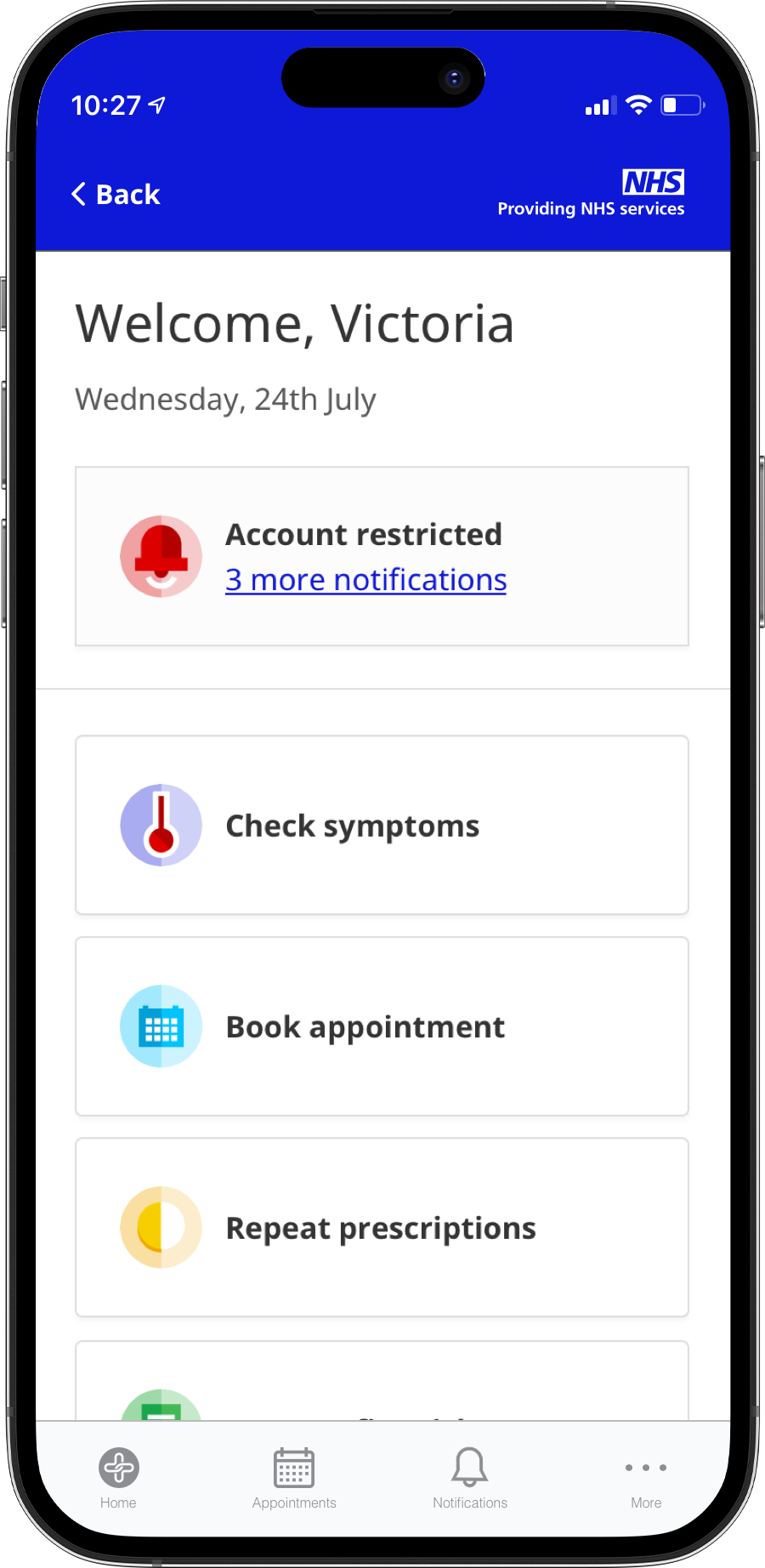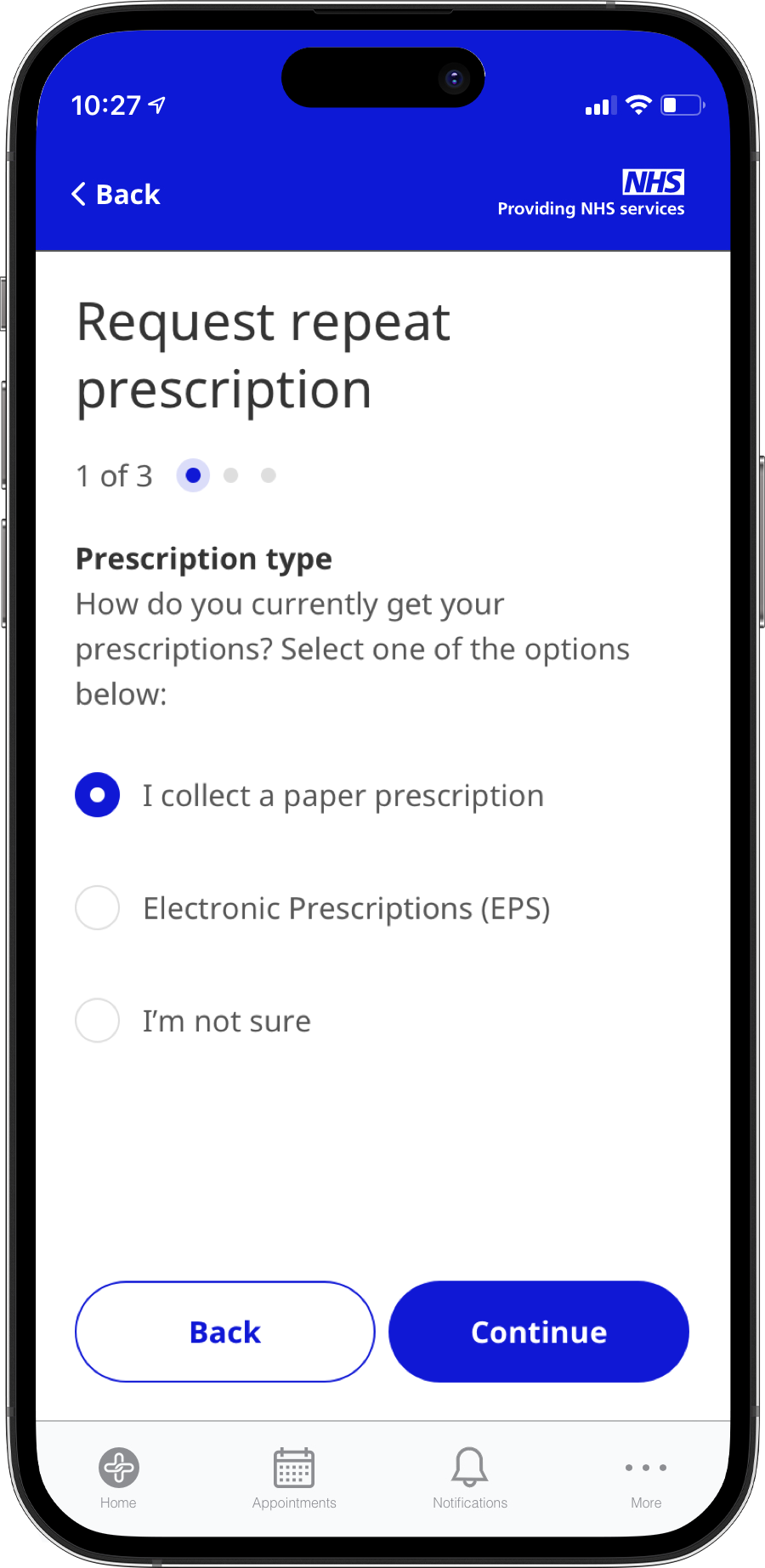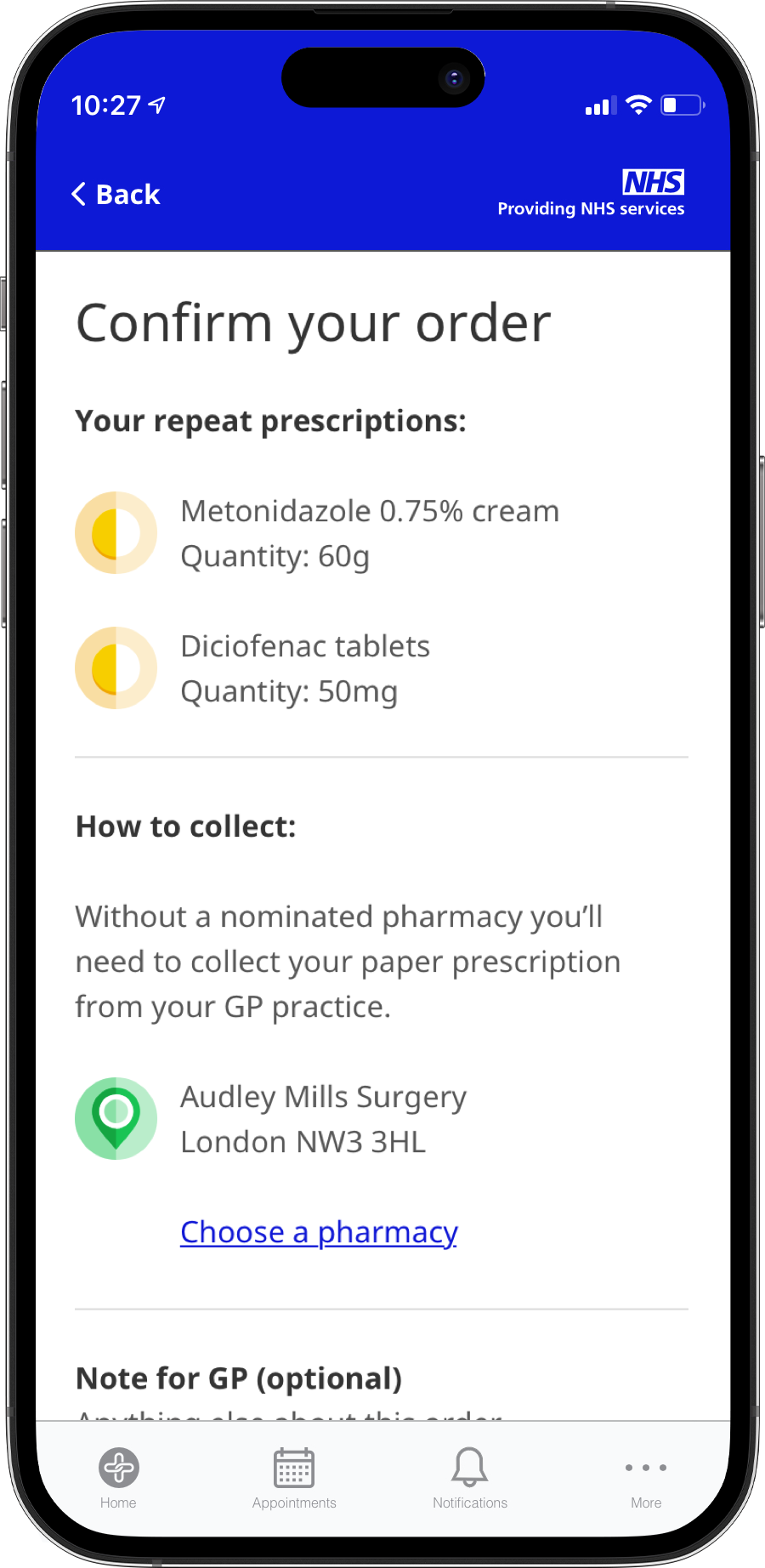In 2020, Doctorlink was selected by the NHS as the only provider of both online triage and video consultations during COVID-19. I designed the video consultation solution, enabling patients and clinicians to connect safely and intuitively from home.
Repeat Prescriptions
Challenge
43% of the population rely on repeat prescriptions, costing the NHS nearly £8 billion annually. Online management could save GPs up to 6 hours 40 minutes per week.
Goal & Timeline
Week 1: Identify and design an in-app solution for repeat prescription management
Week 2: Validate with patient and GP feedback, focusing on safety and ease of use
Once I understood the key limitations and constraints, I mapped a simple success flow: a registered patient logs into Doctorlink to re-order medication for an existing repeat prescription.




I shared these ideas with our Clinical Governance, Product, and Engineering teams, which surfaced several important considerations:
What if a patient’s record is missing current repeat prescriptions?
How should patients review past orders?
How do we show the status of an active order?
How can we distinguish between existing medication orders and new requests?
Testing
To validate our assumptions, I tested an early prototype with 10 patients interested in managing their repeat prescriptions digitally.
Key learnings from testing:
Patients need a clear signal when a prescription is ready to collect
It's unclear how or when they’ll be contacted
Reminders to re-order are important
Patients worry that changing their pharmacy is permanent
The “Remove medication” CTA caused anxiety for similar reasons
Updating design documentation
Approved components from the new journey need to be added to our design documentation. This makes them accessible to other designers and provides context and detail for developers.
The results
Our MVP lets patients request repeat prescriptions from their practice, but it isn’t yet connected to their patient records.
GP practices favour tools that save time and reduce admin. However, this version adds workload as staff must review and escalate email requests manually.
Uptake has been lower than expected, so we're now exploring a fully integrated version managed via a clinician-facing practice portal.









